Is it time to reassess your Australian bank exposure?
Australian subordinated bonds (5.79% YTW) are yielding at a similar level to Australian bank hybrids including franking (6.36% YTW) and to the 12-month trailing dividend yield on Australian bank equity (6.78%), despite differing credit structure profiles, providing an opportunity for investors.
Inflation stickiness and strength of the global economy, despite rapid rate rises, has taken the market by surprise, but it has also created opportunities on many fronts. We believe subordinated debt is one such opportunity.
It is called ‘subordinated’ because it sits below ‘senior debt’ or traditional bonds in the capital structure, but it also sits above and takes priority over ordinary shares and hybrids, in the event of insolvency. See the shaded area in the chart below which provides a simplified example of the capital structure in a financial institution to illustrate how different securities issued by financial institutions rank in priority of payment in the event of collapse.
Figure 1. Simplified capital structure of a financial institution
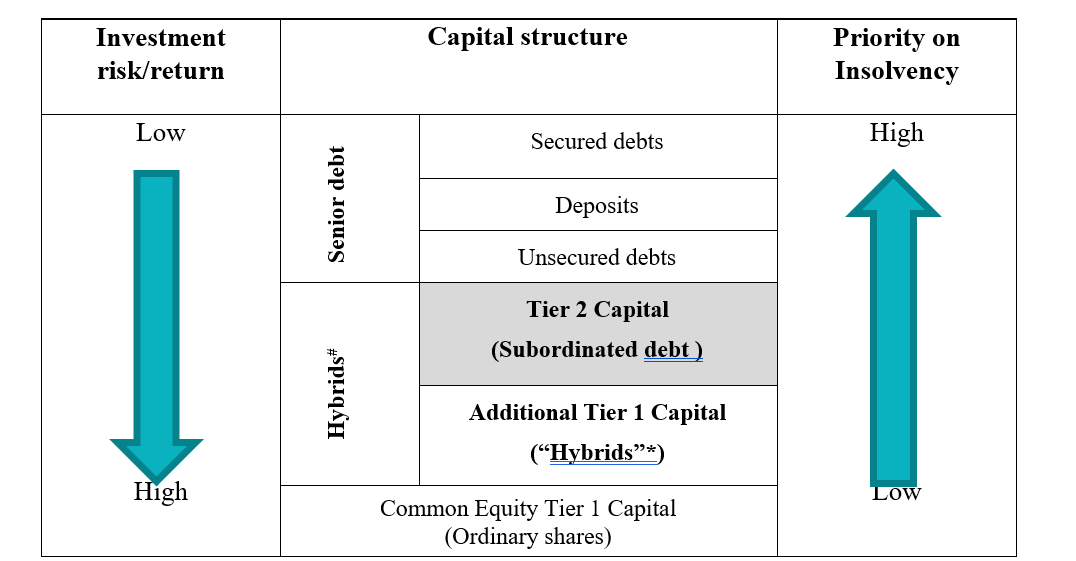
#Per ASIC Report 365. *Per market convention.
Right now, yields on subordinated debt are comparable to hybrids and common equity, despite its higher ranking in the capital structure.
Australian Subordinated Debt versus Australia Bank Equity
The rising interest rate environment and corresponding increase in credit risk premium given the uncertain economic outlook has improved yields on corporate bonds. Australian subordinated debt yields are now similar to the 12m trailing dividend yield including franking on Australian bank equity.
Figure 2: Yield comparison: Bank subordinated debt versus Australian bank equities
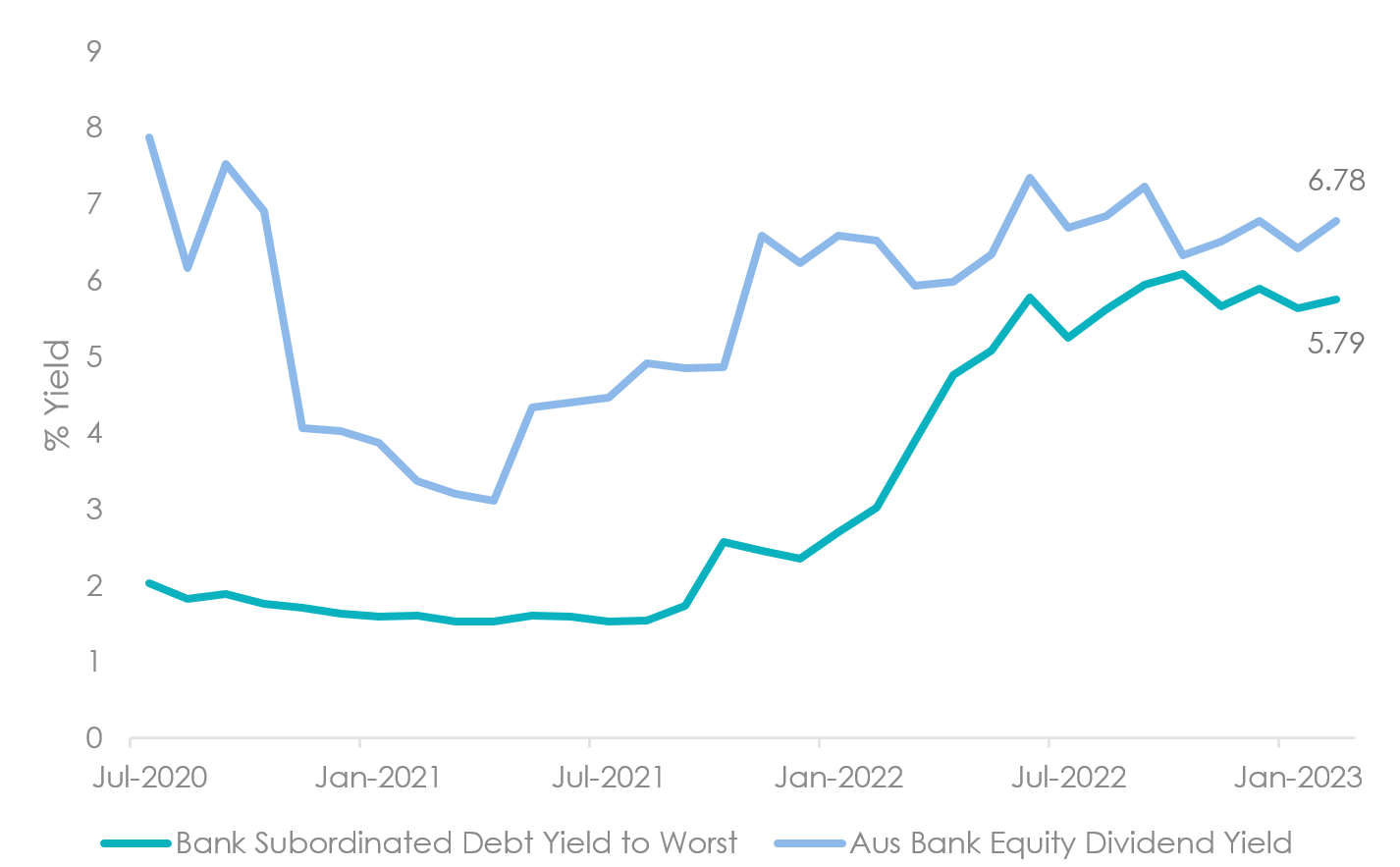
Source: Bloomberg, Bank Subordinated Debt as iBoxx AUD Investment Grade Subordinated Debt Mid Price Index, Aus Bank Equity as S&P/ASX 200 Banks Index. As at 20 February 2023. You cannot invest in an index.
For higher yield seeking investors concerned about volatility of bank equity returns, Australian subordinated debt could be an alternative to consider. Subordinated debt exposure provides low equity beta exposure.
Figure 3: Drawdown
comparison: Subordinated debt versus Australian bank equities
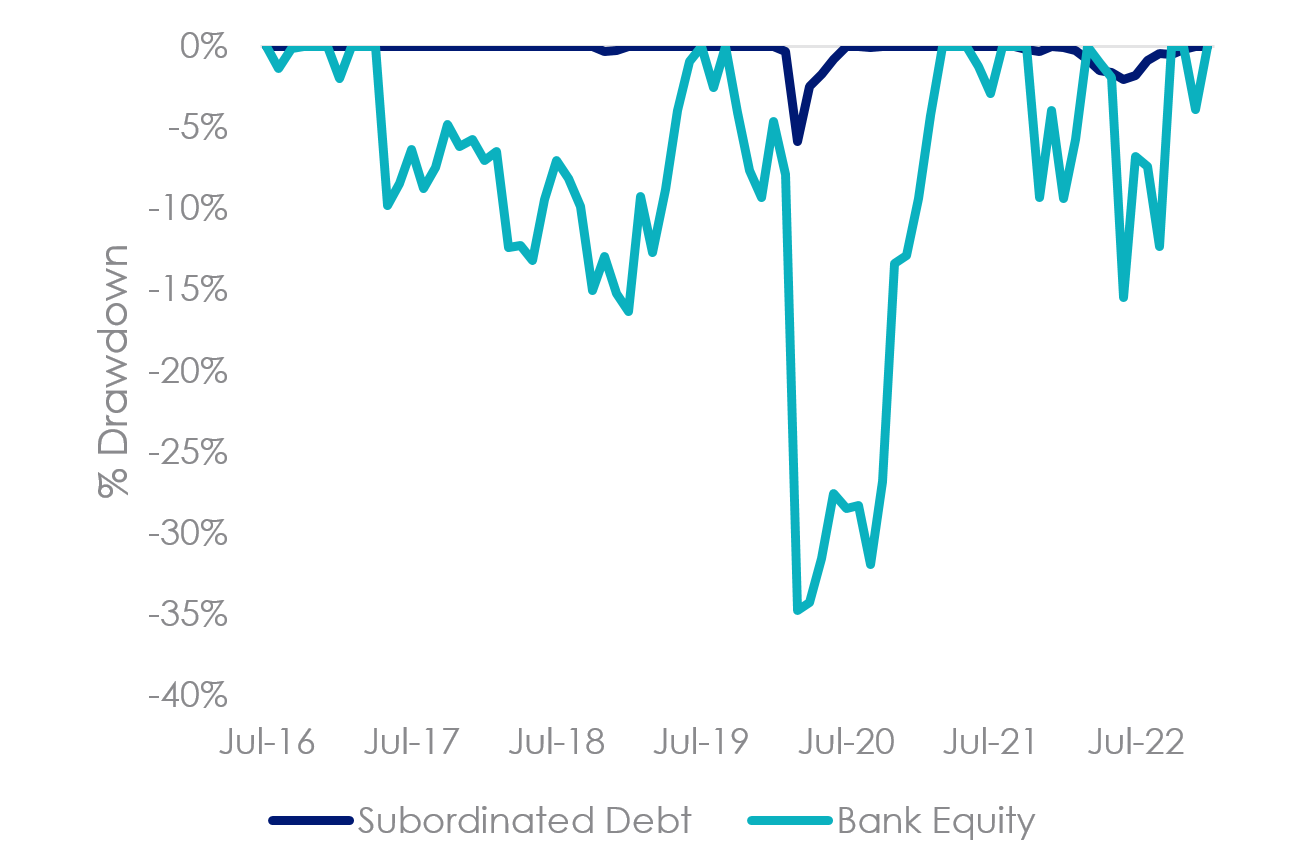
Figure 4: 12m rolling
beta: Subordinated debt versus Australian bank equities
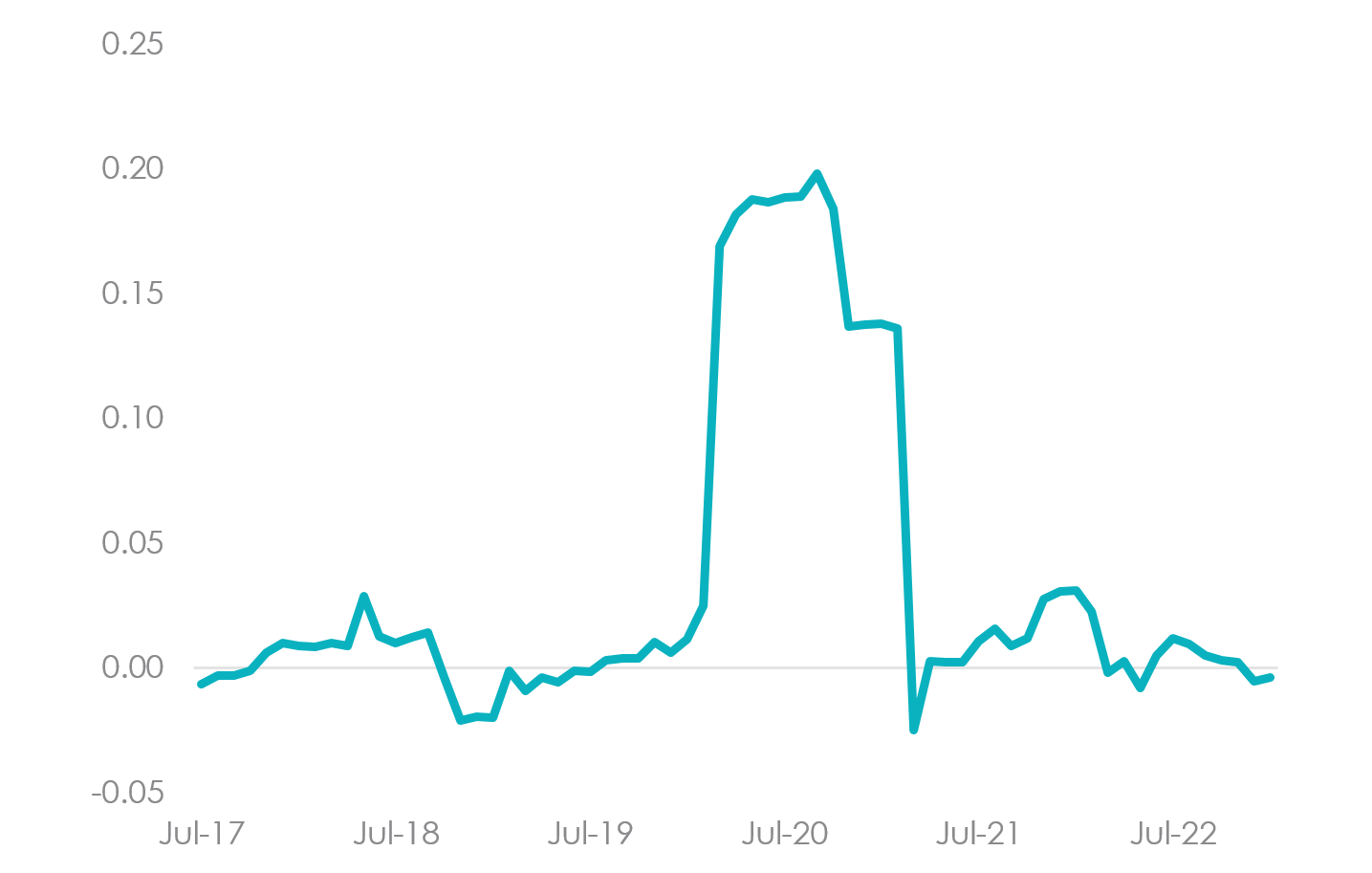
Subordinated bonds versus bank hybrids credit spreads
The credit spread differential between Australian subordinated bonds and bank hybrids including franking has progressively compressed to 67 basis points since March 2018. Australian bank hybrid credit spreads have continued to tighten, contrary to both Australian and global bond yield trends. Elsewhere, credit spreads have widened due to geopolitical tensions, and following concerns about the impact on debt serviceability caused by rising inflation and the higher rates. This provides an opportunity for bond investors to potentially earn a similar yield for subordinated bonds as bank hybrids, despite differing credit structure profiles.
Figure 5: Credit spread
comparison
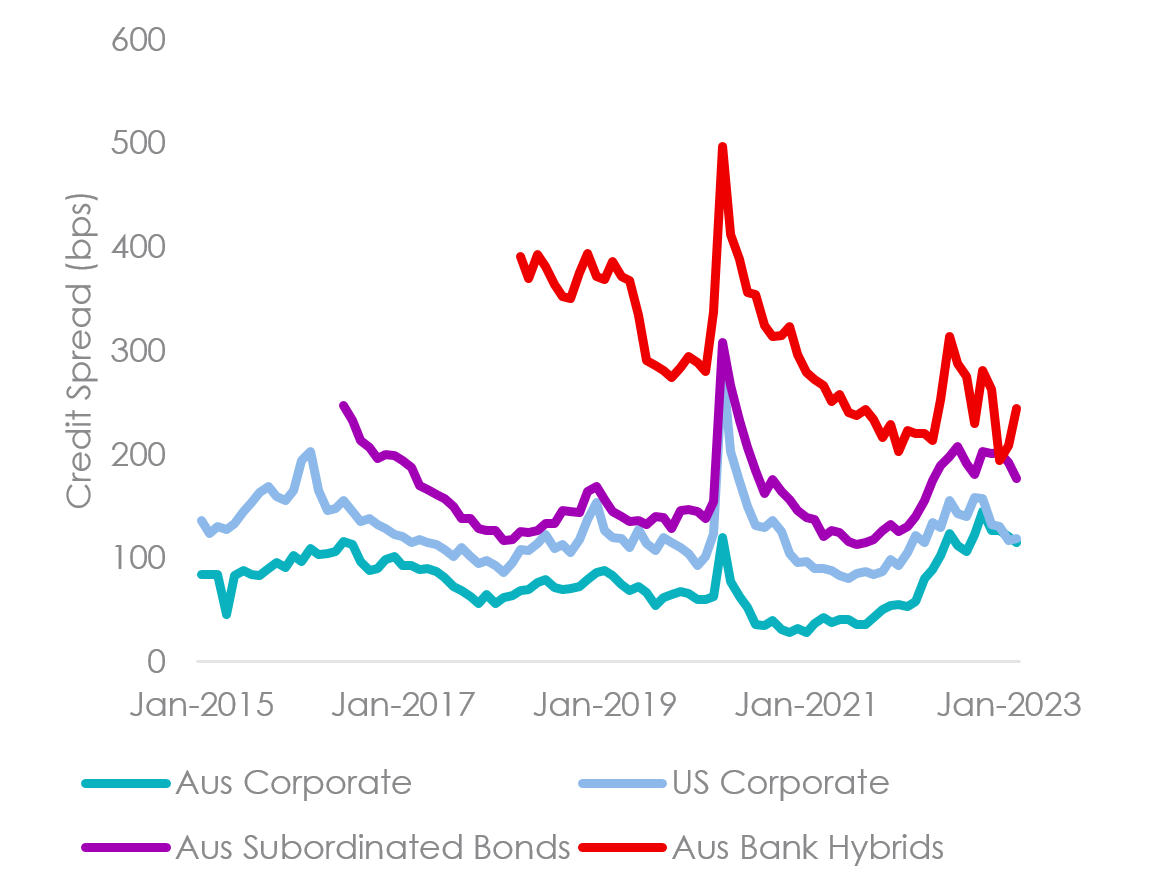
Figure 6: Australian
subordinated bonds versus bank hybrid credit spread differential
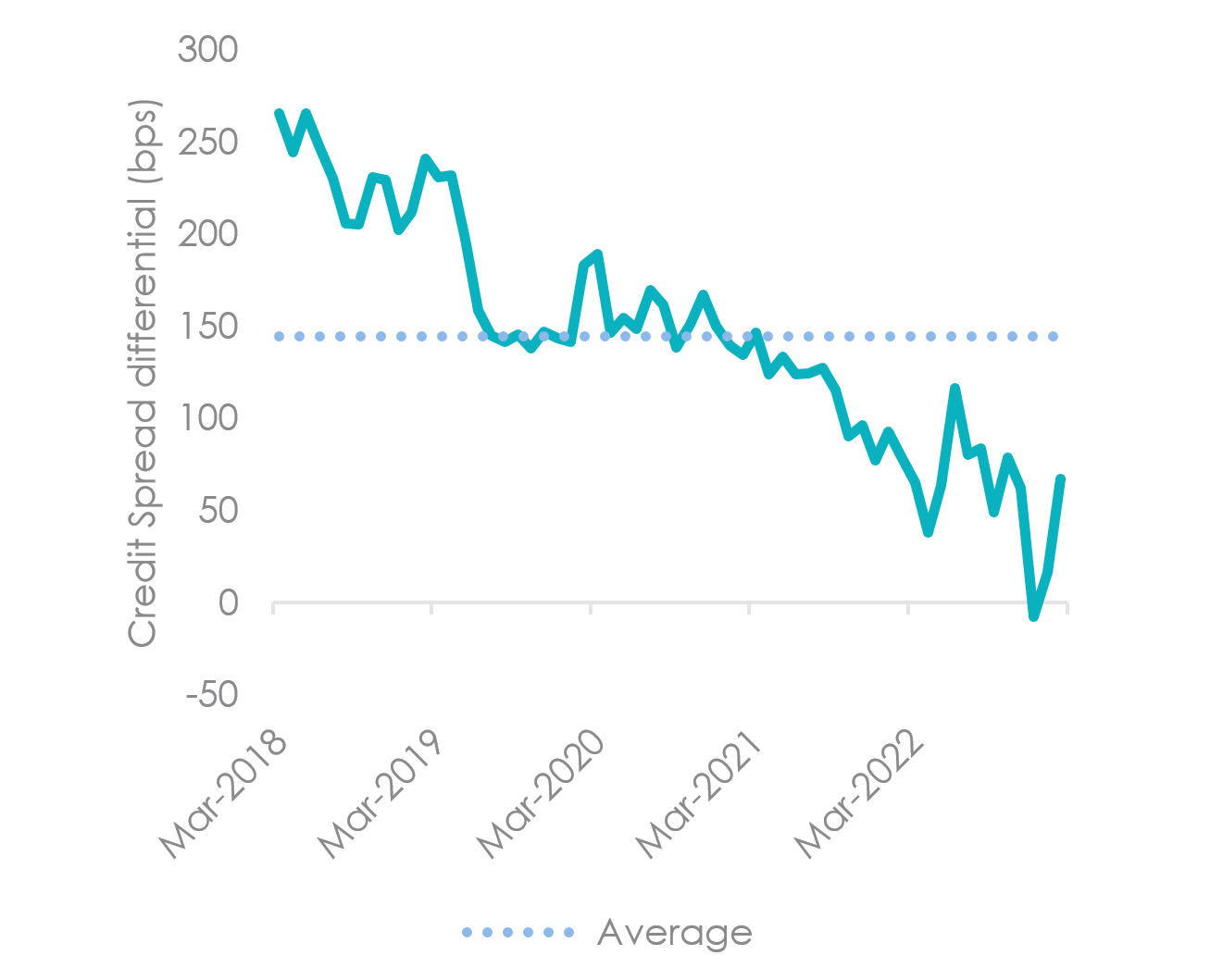
Figure 7: Australian subordinated bonds versus bank hybrid credit spreads
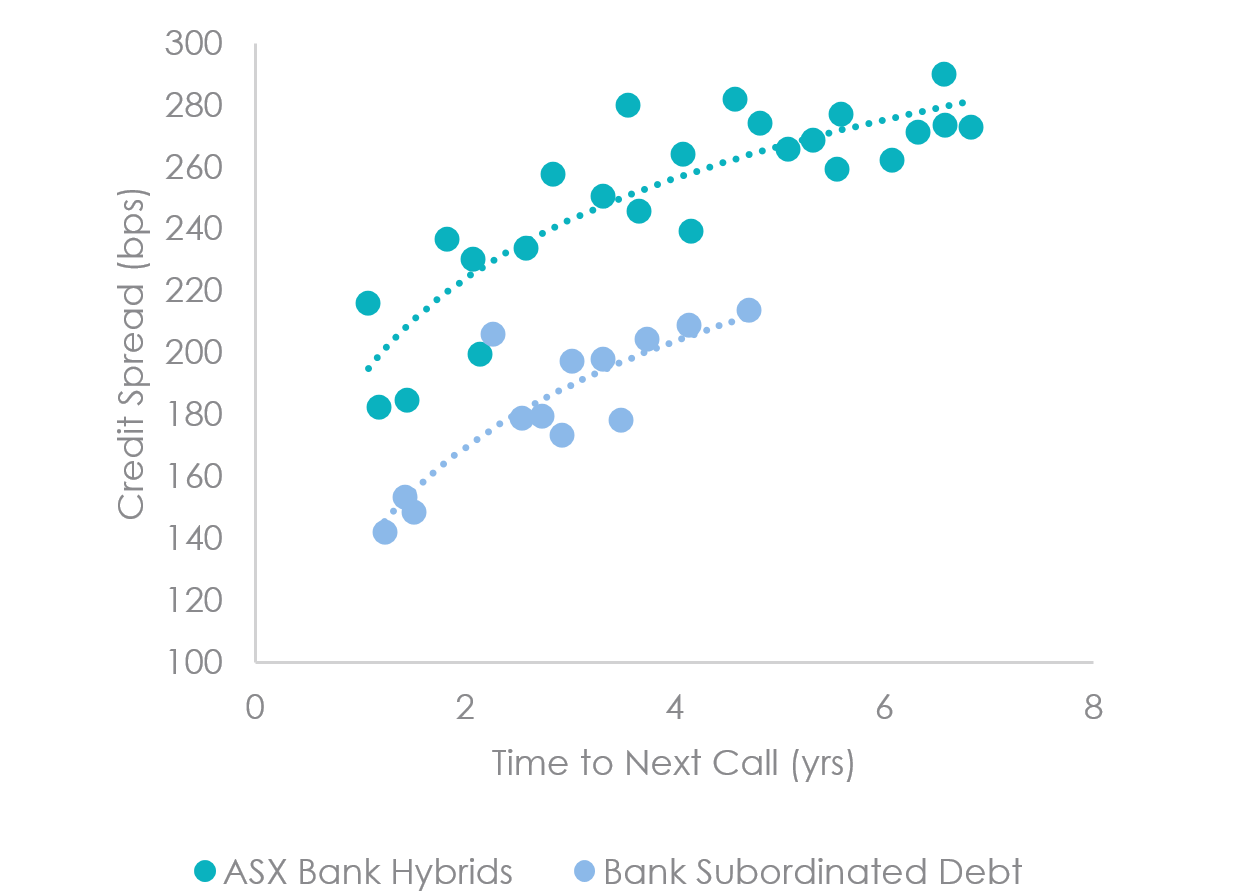
4 topics

